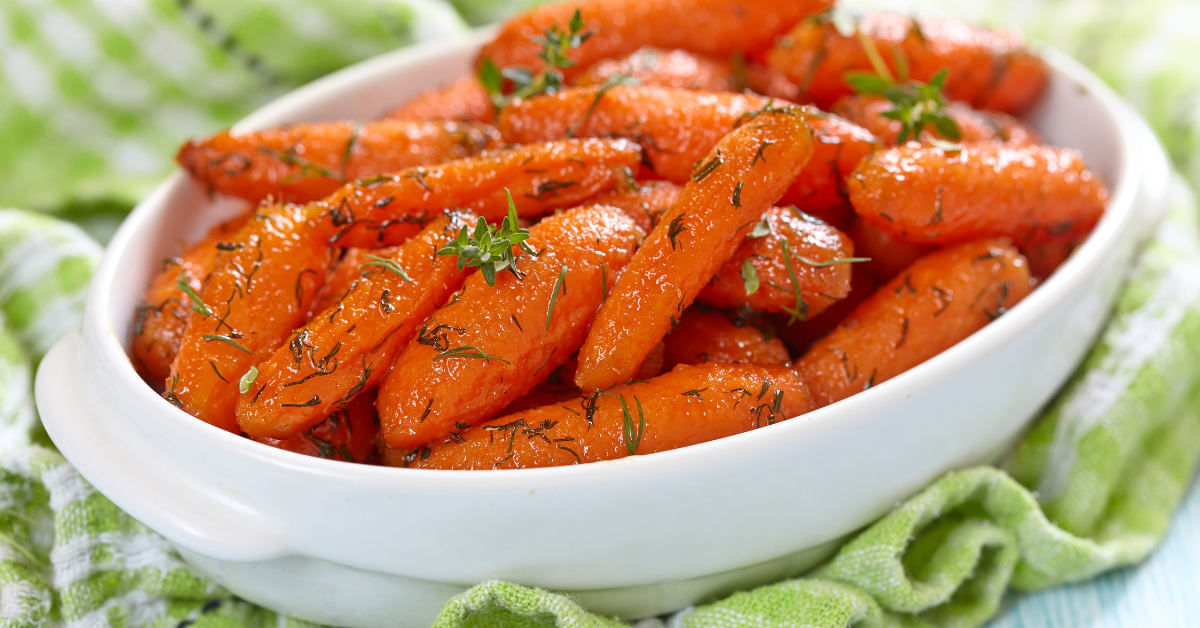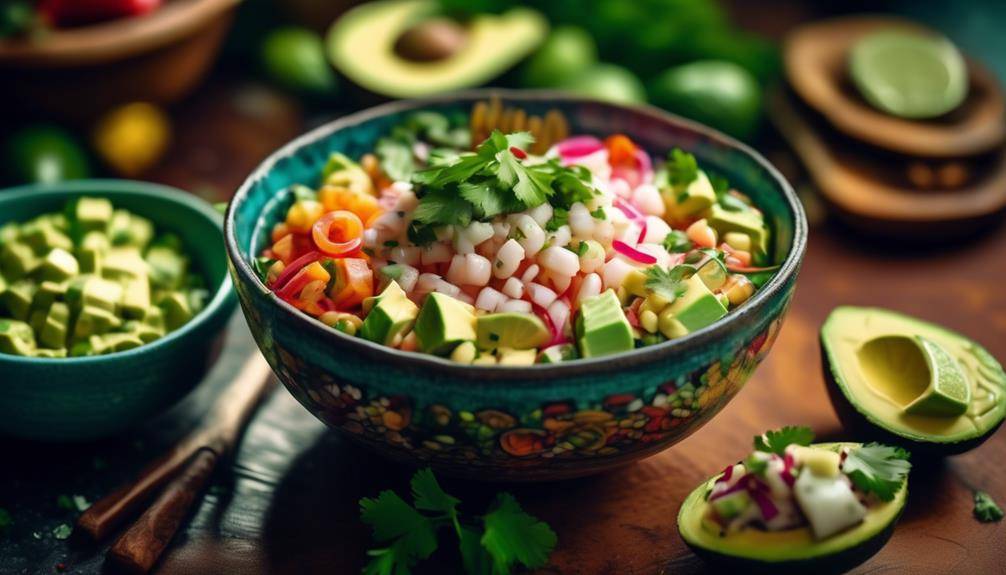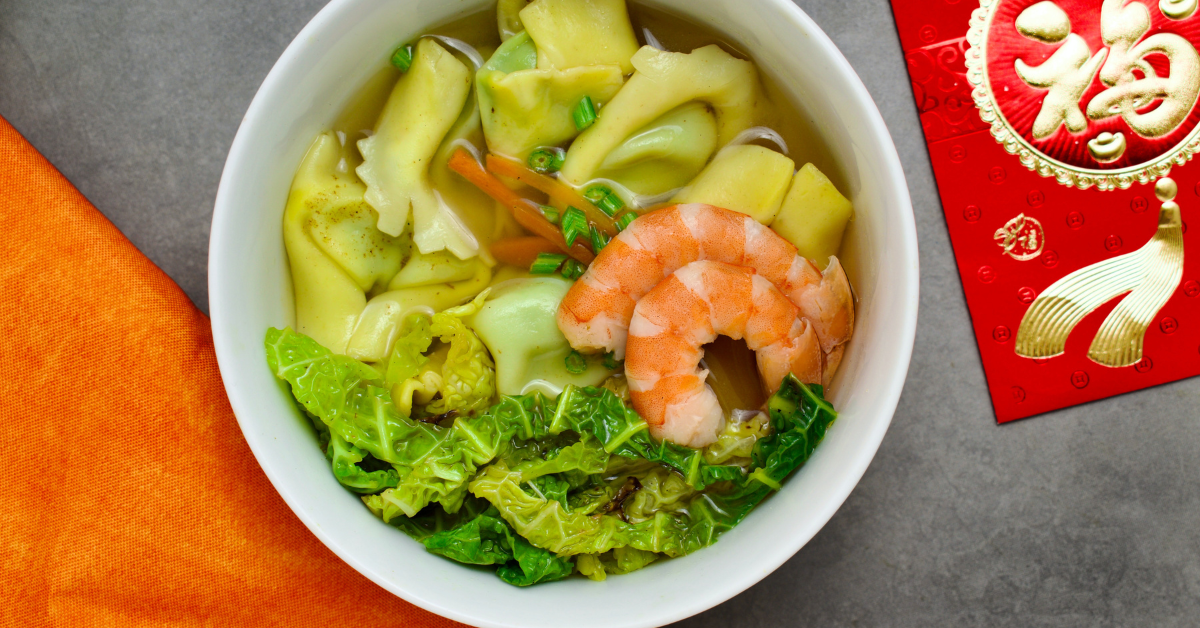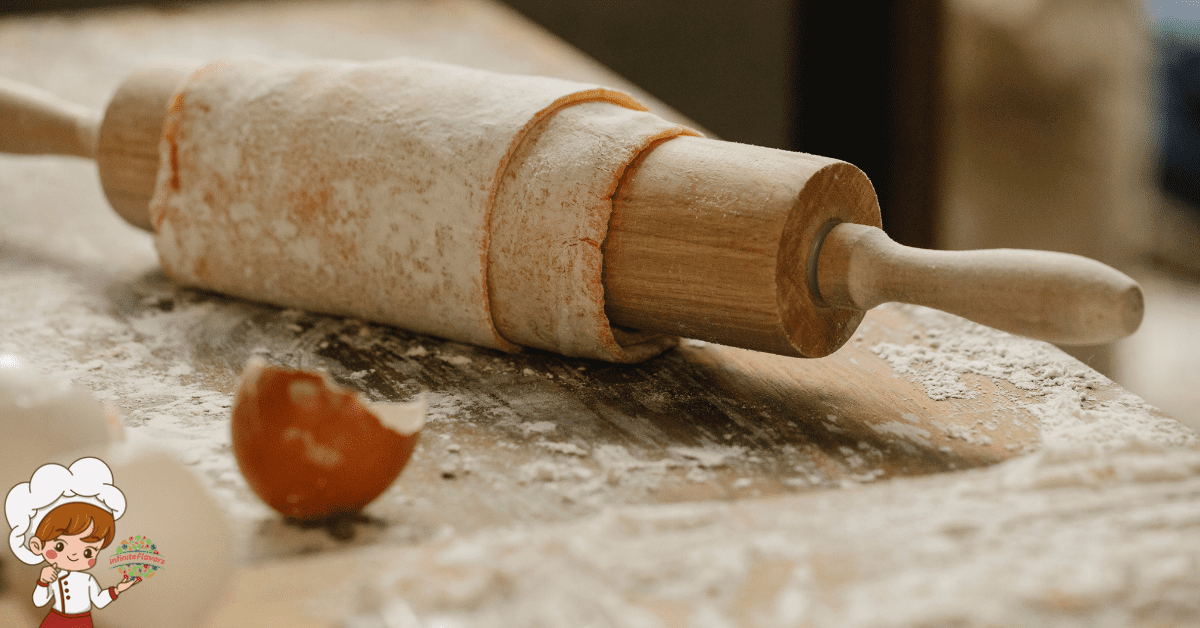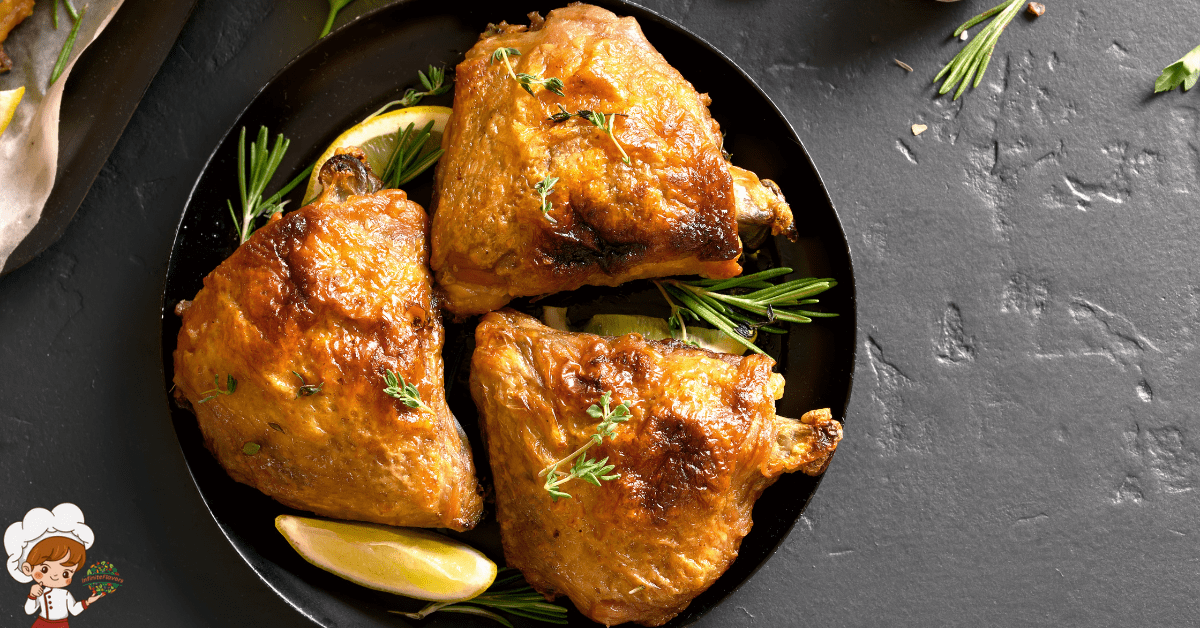Popular Vietnamese Cooking Tips And Tricks
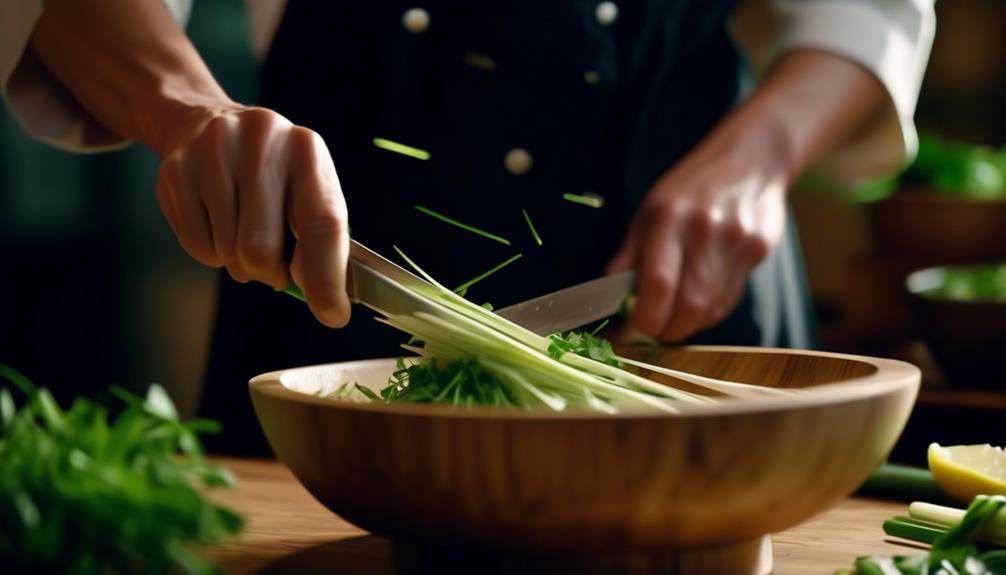
Looking to elevate your Vietnamese cooking skills? Try Popular Vietnamese Cooking Tips And Tricks; from mastering the art of making pho broth to achieving the perfect balance of flavors in stir-fries, there are numerous tips and tricks that can take your Vietnamese dishes to the next level. Whether you’re a seasoned cook or just starting out, these techniques will help you create authentic and delicious Vietnamese meals that will impress your family and friends. So, are you ready to discover the secrets behind Vietnamese cooking?
Mastering the Art of Making Pho Broth
To master the art of making pho broth, you’ll need to create a flavorful and aromatic base that forms the foundation of this beloved Vietnamese soup. Pho broth is the heart and soul of the dish, and getting it right is essential to creating an authentic and delicious bowl of pho.
The first step in mastering pho broth techniques is to start with quality ingredients. Traditional pho broth is made with a combination of beef bones, spices, and aromatics such as onions, ginger, and star anise. These ingredients work together to create a rich and complex flavor profile that is unique to pho.
To create a flavorful Vietnamese broth, it’s important to take the time to properly prepare and cook the ingredients. This involves roasting the bones and aromatics before simmering them in water for several hours. The slow cooking process allows the flavors to meld together and develop, resulting in a broth that is rich, savory, and deeply satisfying.
Another key technique in mastering pho broth is skimming off any impurities that rise to the surface during the simmering process. This helps to ensure a clear and clean broth, free from any unwanted flavors or textures.
Lastly, seasoning the broth is crucial to achieving the perfect balance of flavors. Traditional pho broth is seasoned with fish sauce and sugar, which adds a depth of umami and sweetness. Adjusting the seasoning to your taste is important, as it can vary depending on personal preference.
Achieving the Perfect Balance of Flavors in Stir-Fries
Now that you’ve mastered the art of making pho broth, let’s turn our attention to achieving the perfect balance of flavors in stir-fries. Stir-frying is a popular cooking technique in Vietnamese cuisine that allows for the quick and intense cooking of ingredients, resulting in a dish that is both flavorful and healthy. To achieve the ideal flavor balance in your stir-fries, there are a few techniques that you should keep in mind.
Firstly, it is important to use the right combination of ingredients to create a harmonious flavor profile. Vietnamese stir-fries often include a mix of sweet, sour, salty, and spicy elements. For sweetness, you can add a touch of sugar or use ingredients like carrots or bell peppers. Sourness can be achieved by adding lime juice or vinegar. Salty flavors can come from ingredients such as fish sauce or soy sauce. And for spiciness, you can use chili peppers or chili paste.
Next, the order in which you add ingredients to the wok is crucial for achieving the perfect flavor balance. Start by stir-frying the aromatics, such as garlic and onions, to infuse the oil with their flavors. Then, add the meats or proteins, followed by the vegetables. This allows the flavors to build up gradually and ensures that each ingredient is cooked to perfection.
Furthermore, the cooking time is also important for achieving the right balance of flavors. Overcooking can result in a loss of texture and flavor, while undercooking can leave the dish bland and raw. It is important to stir-fry the ingredients quickly over high heat, ensuring that they are cooked just enough to retain their natural flavors and textures.
Selecting and Preparing Fresh Herbs for Authentic Vietnamese Dishes
When it comes to creating authentic Vietnamese dishes, selecting and preparing fresh herbs is essential. To enhance the flavors of your dishes, it’s important to choose the right herbs. Look for vibrant, aromatic herbs like cilantro, Thai basil, and mint. Once you have the herbs, make sure to wash them thoroughly and remove any tough stems or wilted leaves before using them in your recipes.
Herb Selection Tips
Selecting and preparing fresh herbs is essential for achieving the authentic flavors that make Vietnamese dishes so vibrant and delicious. When it comes to herb pairing combinations, there are a few classic combinations that work beautifully in Vietnamese cuisine. The fragrant basil pairs well with mint and cilantro, adding a fresh and aromatic touch to dishes like pho and spring rolls.
Another popular combination is lemongrass and kaffir lime leaves, which lend a tangy and citrusy flavor to soups and stir-fries. To ensure that your herbs stay fresh and flavorful, it is important to store them properly. One tip is to place them in a glass of water, covering them loosely with a plastic bag, and storing them in the refrigerator. This helps to keep them hydrated and maintain their freshness for longer.
Preparing Herbs Correctly
To achieve the authentic flavors that make Vietnamese dishes so vibrant and delicious, it is crucial to properly prepare fresh herbs. When it comes to herb storage, it’s best to keep them in the refrigerator, wrapped loosely in a damp paper towel or stored in a glass of water. This will help to maintain their freshness and flavor for longer. Before using the herbs, give them a gentle rinse under cold water to remove any dirt or debris.
After washing, pat them dry with a paper towel or a clean kitchen towel. Now, it’s time to prepare the herb garnishes. For delicate herbs like cilantro or mint, simply pluck the leaves from the stems and discard the stems. For heartier herbs like Thai basil or sawtooth herb, you can finely chop both the leaves and the stems to add a burst of flavor to your dishes. With these simple steps, you’ll be able to properly prepare fresh herbs and enhance the authenticity of your Vietnamese dishes.
Enhancing Vietnamese Flavors
Now that you have properly prepared your fresh herbs, let’s explore how to enhance the flavors of your Vietnamese dishes with the right selection and preparation techniques. To improve the taste and enhance the aroma of your dishes, consider the following tips:
- Choose the right herbs: Selecting the right herbs is crucial to achieving authentic Vietnamese flavors. Popular choices include cilantro, Thai basil, mint, and perilla leaves. Each herb adds its own unique flavor profile to the dish.
- Cilantro: Known for its fresh and citrusy taste, cilantro is commonly used in soups, salads, and stir-fries.
- Thai basil: With its peppery and slightly sweet flavor, Thai basil is perfect for adding depth to dishes like pho and stir-fries.
- Mint: Mint leaves provide a refreshing and cool taste, making them ideal for salads, spring rolls, and drinks.
- Perilla leaves: These aromatic leaves have a minty, anise-like flavor and are often used in wrapping grilled meats or adding to soups.
- Proper preparation techniques: To fully release the flavors and aromas of the herbs, it is important to handle them correctly. Gently tearing or crushing the leaves just before using them will help release their essential oils and intensify their taste.
Nailing the Technique of Rolling Perfect Spring Rolls
To nail the technique of rolling perfect spring rolls, there are a few key points to keep in mind. First, make sure to distribute the filling evenly across the wrapper to ensure a balanced taste in every bite. Next, roll the spring roll tight and secure, using gentle pressure to create a compact and neat roll. By mastering these two points, you’ll be able to create spring rolls that are not only visually appealing but also deliciously satisfying.
Proper Filling Distribution
Achieving the perfect spring roll begins with skillfully distributing the filling throughout the wrapper. Proper filling distribution is crucial to ensure each bite is packed with a balanced combination of flavors and textures. To achieve even filling distribution, consider the following techniques:
- Prepping the Filling: Chop all the ingredients into small, uniform pieces. This ensures that every bite contains a harmonious blend of flavors.
- Placement Strategy: Start by placing the filling in the center of the wrapper, leaving a border around the edges. Then, distribute the filling evenly from the center towards the edges.
- Layering Technique: Layer the ingredients in a way that allows for even distribution. For example, place the protein, such as shrimp or tofu, first followed by the vegetables and herbs.
- Rolling Technique: Roll the wrapper tightly, making sure to keep the filling compact. This will prevent any gaps or air pockets and ensure that the filling stays in place.
Rolling Tight and Secure
To roll tight and secure spring rolls, the key is to maintain a firm grip on the wrapper while adeptly encasing the flavorful filling within. Proper rolling techniques are crucial in achieving the perfect texture of spring rolls. Start by placing the filling in the center of the wrapper, leaving a small border around the edges. Fold the bottom edge of the wrapper over the filling and tuck it in tightly. Then, fold the sides inward to seal the filling inside. Roll the wrapper up, making sure to keep it tight as you go.
The final result should be a neatly rolled spring roll with a secure seal. Practice makes perfect, so don’t be discouraged if your first few attempts are not flawless. With time and experience, you’ll master the art of rolling tight and secure spring rolls.
Tips for Cooking Rice Noodles to Perfection
For perfect rice noodles every time, follow these essential tips and tricks.
- Choose the right type of rice noodles: There are different types of rice noodles available, such as thin, medium, or wide. Each type has a different cooking time and texture. Thin noodles cook faster and have a softer texture, while wider noodles take longer to cook and have a chewier texture. Consider the recipe you’re making and choose the appropriate type of rice noodles accordingly.
- Soak the noodles properly: Before cooking, soak the rice noodles in cold or lukewarm water for about 20-30 minutes, or as directed on the packaging. This step ensures that the noodles are evenly hydrated and will cook evenly, resulting in a perfect texture.
- Don’t overcook the noodles: Rice noodles cook quickly, so it’s important to keep an eye on them to prevent overcooking. Follow the cooking time mentioned on the package and start testing for doneness a minute or two before the recommended time. The noodles should be tender but still have a slight bite (al dente) when fully cooked.
- Rinse with cold water: After cooking the rice noodles, drain them and rinse them immediately with cold water. This stops the cooking process and removes excess starch, preventing the noodles from becoming clumpy or mushy.
- Use immediately or refresh before serving: Rice noodles tend to stick together when left to sit, so it’s best to use them immediately in your recipe. If you need to prepare them in advance, toss them with a little oil to prevent sticking. If the noodles have cooled down, you can refresh them by briefly dipping them in hot water or warming them up in a microwave.
Enhancing the Flavor of Vietnamese Soups With Fish Sauce
Fish sauce is the umami powerhouse that can take your Vietnamese soups to the next level. It adds a depth of flavor that balances the other ingredients and brings out the best in each bite. Considered the secret ingredient in many traditional recipes, fish sauce is a must-have for any authentic Vietnamese soup.
Umami Powerhouse: Fish Sauce
With its rich and savory flavor, Vietnamese soups are elevated to new heights by the addition of the umami powerhouse known as fish sauce. Made from fermented fish and salt, fish sauce is a staple ingredient in Vietnamese cuisine. It adds depth and complexity to dishes, creating a perfect balance of flavors. But if you’re looking for fish sauce alternatives, there are a few options you can try.
Tamari, a gluten-free soy sauce, can provide a similar umami taste. Coconut aminos, made from coconut sap, offer a milder and sweeter flavor. When it comes to health benefits, fish sauce is packed with essential nutrients like protein, vitamins, and minerals. It is also a good source of omega-3 fatty acids, which are beneficial for heart health. So, next time you’re cooking Vietnamese soup, don’t forget to unleash the umami power of fish sauce.
Balancing Flavors: Fish Sauce
Elevating the flavors of Vietnamese soups to new heights, fish sauce serves as the key ingredient in achieving the perfect balance of tastes. Known for its ability to enhance umami flavors, fish sauce adds a savory depth to your soup that is hard to replicate with other seasonings. Made from fermented fish, this condiment brings a unique and complex flavor profile to your dishes.
However, if you’re looking for alternative seasoning options, there are a few substitutes that can provide a similar taste. Soy sauce, for example, can add a salty and savory note to your soup. Oyster sauce, with its rich and slightly sweet flavor, can also be used as a substitute. Experiment with these alternatives to find the perfect balance of flavors in your Vietnamese soups.
Secret Ingredient: Fish Sauce
Enhance the flavor of your Vietnamese soups with a secret ingredient that brings a unique and complex flavor profile to your dishes. Fish sauce, a staple in Vietnamese cuisine, is the key to achieving authentic and delicious flavors. Made from fermented fish and salt, this savory condiment adds depth and richness to soups, making them truly irresistible.
To further enhance your soups, here are some tips and tricks:
- Experiment with different fish sauce alternatives, such as soy sauce or tamari, to cater to dietary restrictions or personal preferences.
- Don’t be afraid to play with traditional Vietnamese spices like lemongrass, ginger, and star anise, as they complement fish sauce beautifully and add layers of complexity to your soups.
Using Lemongrass as a Key Ingredient in Vietnamese Cooking
Lemongrass, a fragrant and versatile herb commonly used in Vietnamese cuisine, adds a distinctive citrusy flavor that elevates the taste of dishes to a whole new level. Apart from its incredible taste, lemongrass also offers several health benefits. This herb is known for its antibacterial, antifungal, and anti-inflammatory properties. It is rich in antioxidants, vitamins, and minerals, making it a valuable addition to any dish.
In Vietnamese cooking, lemongrass is often used in marinades, soups, stir-fries, and curries. To release its flavor, you can either chop the lemongrass into small pieces or bruise it by gently pounding it with a heavy object. This helps to break down the tough fibers and release the aromatic oils. Lemongrass can be used whole in dishes like soups and broths, where its flavor can infuse the entire dish. Alternatively, you can finely chop or mince it for recipes that require a more subtle flavor.
One popular technique for using lemongrass is to create a lemongrass paste. To make this paste, finely chop the lemongrass and combine it with other ingredients like garlic, shallots, and chili peppers. This paste can be used as a base for many Vietnamese dishes, giving them a burst of citrusy flavor. Another technique is to infuse lemongrass into oil or broth, which can then be used to enhance the flavor of various dishes.
Balancing Sweet, Sour, Salty, and Spicy Flavors in Vietnamese Cuisine
When it comes to Vietnamese cuisine, achieving the perfect balance of sweet, sour, salty, and spicy flavors is key. To achieve this balance, there are a few techniques you can employ. One is to use traditional seasoning ingredients such as fish sauce, lime juice, and chili peppers. Another is to adjust the flavors to your personal taste by adding more or less of certain ingredients. By mastering the art of balancing flavors, you can create authentic and delicious Vietnamese dishes.
Flavor Balance Techniques
To achieve the perfect balance of sweet, sour, salty, and spicy flavors in Vietnamese cuisine, you’ll need to master a few key techniques. Here are some flavor balance techniques that will elevate your Vietnamese dishes to the next level:
- Flavor Pairing: Vietnamese cuisine is known for its harmonious combination of flavors. To achieve this, you need to understand which flavors complement each other. For example, the sweetness of palm sugar pairs well with the tanginess of lime juice, creating a perfect balance of sweet and sour.
- Cooking Techniques: The way you cook your ingredients can also affect the flavor balance of your dish. Stir-frying, for instance, helps to retain the natural sweetness of the ingredients while adding a touch of smokiness. Boiling, on the other hand, can help mellow out the spiciness of certain ingredients.
Traditional Seasoning Ingredients
In Vietnamese cuisine, achieving the perfect balance of sweet, sour, salty, and spicy flavors relies heavily on the use of traditional seasoning ingredients. These ingredients are essential in creating the distinct flavor profiles that are characteristic of Vietnamese dishes. One of the most commonly used traditional seasoning techniques is the combination of fish sauce and sugar. Fish sauce provides the salty and umami flavors, while sugar adds a touch of sweetness. Another traditional ingredient is lime or lemon juice, which adds a tangy and sour taste to the dish. To incorporate spiciness, Vietnamese cooks often use fresh chili peppers or chili paste. These traditional seasoning ingredients work together harmoniously to create a balanced and flavorful Vietnamese cuisine.
Adjusting Flavors to Taste
Achieving the perfect balance of sweet, sour, salty, and spicy flavors in Vietnamese cuisine is an art that can be adjusted to taste using traditional seasoning ingredients. Vietnamese cooking relies on a delicate balance of these flavors to create harmonious and complex dishes. To adjust the flavor to your preference, try the following techniques:
- Adjusting Sweetness:
- Add more sugar or honey to increase sweetness.
- Balance sweetness with a touch of sourness using lime or vinegar.
- Balancing Sourness:
- Increase sourness by adding more lime juice or tamarind paste.
- Counterbalance excess sourness with a bit of sweetness or salt.
- Enhancing Saltiness:
- Add fish sauce or soy sauce to enhance saltiness.
- Use salt sparingly and adjust gradually to avoid overpowering the dish.
- Adding Spiciness:
- Increase spiciness with chili peppers or chili sauce.
- Adjust the heat level by removing seeds or using different types of chili.
Incorporating Vietnamese Condiments and Sauces for Added Depth of Flavor
For an authentic and flavorful Vietnamese culinary experience, enhance your dishes by incorporating a variety of traditional condiments and sauces. Vietnamese cuisine is known for its bold and complex flavors, and these condiments and sauces play a crucial role in achieving that. One way to add depth to your dishes is by cooking with Vietnamese herbs. Herbs like lemongrass, cilantro, and Thai basil are commonly used in Vietnamese cooking and can bring a fresh and aromatic touch to your dishes. Lemongrass, for example, adds a citrusy and slightly floral flavor, while cilantro adds a refreshing and herbaceous note.
In addition to herbs, traditional Vietnamese dipping sauces can also elevate your dishes. Nuoc Cham, a popular dipping sauce in Vietnam, is made with fish sauce, lime juice, sugar, garlic, and chili. It has a perfect balance of sweet, savory, tangy, and spicy flavors. This sauce is commonly served with spring rolls, grilled meats, and noodle dishes. Another popular dipping sauce is Hoisin sauce, which is made with soybean paste, garlic, sugar, vinegar, and Chinese five-spice powder. It has a rich and savory taste with a hint of sweetness. Hoisin sauce is often used as a condiment for pho, banh mi, and stir-fried dishes.
Choosing the Right Cuts of Meat for Traditional Vietnamese Dishes
To create truly authentic and delicious Vietnamese dishes, it is essential to carefully select the right cuts of meat. Vietnamese cuisine is known for its fresh ingredients and bold flavors, and choosing the right cuts of meat is crucial to achieving the desired taste and texture. Here are some tips to help you in your meat selection for traditional Vietnamese dishes:
- Pork:
- Pork shoulder: This cut is commonly used in dishes like bánh mì and bún chả. It has the perfect balance of lean meat and fat, which adds flavor and juiciness to the dish.
- Pork belly: This cut is often used in dishes like thịt kho, which is braised pork in caramel sauce. The fatty layers of pork belly make the dish rich and tender.
- Beef:
- Beef flank: This cut is ideal for dishes like bò lá lốt, where the beef is wrapped in betel leaves and grilled. The flank steak is thin and tender, making it perfect for marinating and grilling.
- Beef brisket: This cut is commonly used in dishes like phở. It has a rich, beefy flavor and becomes tender when simmered for a long time.
- Chicken:
- Chicken thighs: This cut is often used in dishes like gà nướng, which is grilled chicken. The thighs are juicy and flavorful, and they hold up well to the cooking techniques used in Vietnamese cuisine.
- Chicken wings: These are commonly used in dishes like gà xào sả ớt, which is stir-fried chicken with lemongrass and chili. The wings are small and flavorful, and they cook quickly.
Choosing the right cuts of meat is essential in Vietnamese cooking. By selecting the appropriate cuts for each dish and using the right cooking techniques, you can create authentic and delicious Vietnamese meals that are sure to impress.
Secrets to Creating Crispy Vietnamese Fried Spring Rolls
When it comes to mastering the art of creating crispy Vietnamese fried spring rolls, attention to detail and a few insider tips can make all the difference in achieving that perfect golden crunch. One of the most important factors in creating crispy spring rolls is maintaining the proper frying temperature. To achieve a crispy texture, it is crucial to fry the spring rolls at a temperature of 350-375 degrees Fahrenheit. This high temperature ensures that the spring rolls cook quickly and evenly, resulting in a crispy exterior.
Another secret to achieving a crispy texture is to use the right type of wrapper. Traditional Vietnamese spring roll wrappers are made from rice flour and water, giving them a light and delicate texture when fried. These wrappers should be soaked in warm water until pliable before being filled and rolled. Be sure to handle the wrappers gently to avoid tearing them, as any holes or rips can cause the oil to seep into the filling and make the rolls soggy.
In addition to the proper frying temperature and the right type of wrapper, the filling plays a crucial role in creating crispy spring rolls. It is important to ensure that the filling is not too wet, as excess moisture can lead to a soggy result. Squeeze out any excess liquid from the ingredients before filling the spring rolls, and avoid overstuffing them. A well-balanced filling with a good ratio of vegetables, meat, and noodles will contribute to achieving that desired crispy texture.
Tips for Making Aromatic Vietnamese Coffee at Home
To achieve the rich and aromatic flavors of Vietnamese coffee right in the comfort of your own home, follow these simple yet effective tips:
- Start with the right coffee beans:
- Look for a dark roast, preferably with a coarse grind.
- Vietnamese coffee beans are known for their strong and bold flavor.
- Invest in a traditional coffee filter:
- A stainless steel phin filter is essential for making authentic Vietnamese coffee.
- It allows the coffee to brew slowly, resulting in a more robust flavor.
- Use condensed milk for sweetness:
- Traditional Vietnamese coffee is typically sweetened with condensed milk.
- Add the desired amount to your cup before pouring in the brewed coffee.
- Experiment with flavor variations:
- Add a touch of vanilla extract or cinnamon for a unique twist.
- For a richer flavor, try incorporating a small amount of cocoa powder.
- Serve with ice for a refreshing treat:
- Vietnamese iced coffee, or ca phe sua da, is a popular way to enjoy this beverage.
- Simply pour the brewed coffee over a glass filled with ice and condensed milk.
Utilizing Unique Ingredients Like Shrimp Paste and Tamarind in Vietnamese Cooking
Now let’s explore the fascinating world of Vietnamese cooking by diving into the utilization of unique ingredients like shrimp paste and tamarind. These ingredients add depth and complexity to Vietnamese dishes, bringing out the unique flavors of the cuisine.
Shrimp paste, known as mắm ruốc in Vietnamese, is a fermented condiment made from ground shrimp mixed with salt. It has a pungent aroma and a strong umami flavor, making it a popular ingredient in many Vietnamese dishes. However, if you’re looking for shrimp paste alternatives, you can try using fish sauce or soy sauce, which also add a savory and salty flavor to your dishes. These alternatives can be used in equal amounts as shrimp paste, but keep in mind that they may alter the taste slightly.
Tamarind, on the other hand, is a sour fruit that is used in both sweet and savory Vietnamese dishes. Its tangy and slightly sweet flavor adds a refreshing element to many traditional recipes. One unique tamarind recipe is tamarind soup, or canh chua. This soup combines the sourness of tamarind with the sweetness of pineapple and the richness of fish to create a harmonious blend of flavors. Another popular dish is tamarind shrimp, where the tangy tamarind sauce complements the succulent shrimp perfectly.
Incorporating shrimp paste and tamarind into your Vietnamese cooking will elevate your dishes to a whole new level. Whether you’re using shrimp paste alternatives or experimenting with unique tamarind recipes, these ingredients will add depth, complexity, and a burst of flavor to your Vietnamese culinary creations. So go ahead and explore the world of Vietnamese cooking with these unique ingredients, and let your taste buds be delighted by the authentic flavors of the cuisine.
Preserving the Vibrant Colors of Vegetables in Stir-Fried Dishes
Preserving the vibrant colors of vegetables in stir-fried dishes is essential to create visually appealing and appetizing meals. When it comes to stir-frying, the right techniques can help you achieve and maintain the beautiful hues of your vegetables. Here are some tips to preserve the colors and ensure your stir-fried dishes look as good as they taste:
- Preparation: Start by selecting fresh and vibrant vegetables. Wash them thoroughly and cut them into uniform-sized pieces. This allows for even cooking and prevents some vegetables from overpowering others in terms of color.
- Blanching: Before stir-frying, blanch your vegetables in boiling water for a brief period. This quick cooking method helps retain the colors by setting the pigments in the vegetables. After blanching, immediately transfer the vegetables to an ice bath to stop the cooking process and lock in their vibrant hues.
- High Heat and Quick Cooking: Stir-frying is all about speed and high heat. By cooking the vegetables quickly over high heat, you preserve their natural colors and crispness. The shorter cooking time prevents the vegetables from becoming dull and overcooked.
Understanding the Importance of Presentation in Vietnamese Cuisine
Presentation plays a crucial role in Vietnamese cuisine, as it enhances the overall dining experience and showcases the beauty and artistry of the dishes. In Vietnamese culture, food is not just about taste; it is also about visual appeal. The importance of plating in Vietnamese cuisine cannot be overstated.
Vietnamese plating techniques are rooted in the idea of balance and harmony. The goal is to create a visually appealing dish that is also balanced in terms of flavors, textures, and colors. The presentation of a dish should reflect the ingredients used and the regional influences that shape Vietnamese cuisine.
One common technique used in Vietnamese plating is the use of vibrant and contrasting colors. This is achieved by incorporating a variety of ingredients such as fresh herbs, vegetables, and edible flowers. For example, a traditional Vietnamese noodle dish called pho is often garnished with a vibrant mix of bean sprouts, lime wedges, cilantro, and Thai basil, which not only adds flavor but also creates a visually stunning dish.
Another important aspect of Vietnamese plating is the arrangement of the ingredients. The goal is to create a visually appealing and balanced dish that is pleasing to the eye. This can be achieved by placing ingredients in a deliberate and thoughtful manner, using different textures and shapes to create visual interest.
In Vietnamese cuisine, presentation is not just about aesthetics; it is also about storytelling. Each dish tells a story, whether it is about the region it comes from, the ingredients used, or the techniques involved. The presentation of a dish should reflect this story and add to the overall dining experience.
Popular Vietnamese Cooking Tips And Tricks; Frequently Asked Questions
What Are Some Common Mistakes to Avoid When Making Pho Broth?
When making pho broth, common mistakes to avoid include using low quality ingredients and not skimming off impurities. It is important to use high quality ingredients in Vietnamese cooking for authentic and flavorful results.
How Do I Prevent Rice Noodles From Sticking Together?
To prevent rice noodles from sticking together, choose the right type of rice noodles for your dish. Soak them in cold water before cooking, and stir them constantly while cooking to prevent clumping.
Can I Substitute Fish Sauce With Any Other Ingredient in Vietnamese Soups?
You can substitute fish sauce in Vietnamese soups with soy sauce or tamari for a similar umami flavor. However, if you want to enhance the authentic taste, try using a combination of soy sauce, lime juice, and sugar.
What Are Some Alternative Ingredients That Can Be Used Instead of Lemongrass?
You can try using lemon zest or lime leaves as alternatives to lemongrass in Vietnamese recipes. They will provide a similar citrusy flavor. Get creative and experiment with different ingredients to add a unique twist to your dishes.
How Can I Ensure That the Vegetables in My Stir-Fried Dishes Retain Their Vibrant Colors?
To retain vibrant colors and preserve the crunchiness of vegetables in your stir-fried dishes, ensure that you cook them quickly over high heat. This will help to lock in their natural colors and maintain their texture.
Conclusion
Mastering the art of Vietnamese cooking requires attention to detail, a balance of flavors, and a deep appreciation for fresh ingredients. From perfecting the rich and aromatic pho broth to rolling flawless spring rolls, these tips and tricks will elevate your culinary skills to new heights. Don’t forget the importance of presentation in Vietnamese cuisine, as it adds an extra layer of authenticity to your dishes. So, grab your apron and embark on a culinary journey filled with vibrant flavors and delightful aromas.




